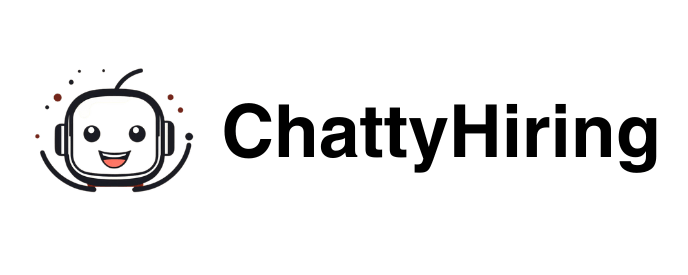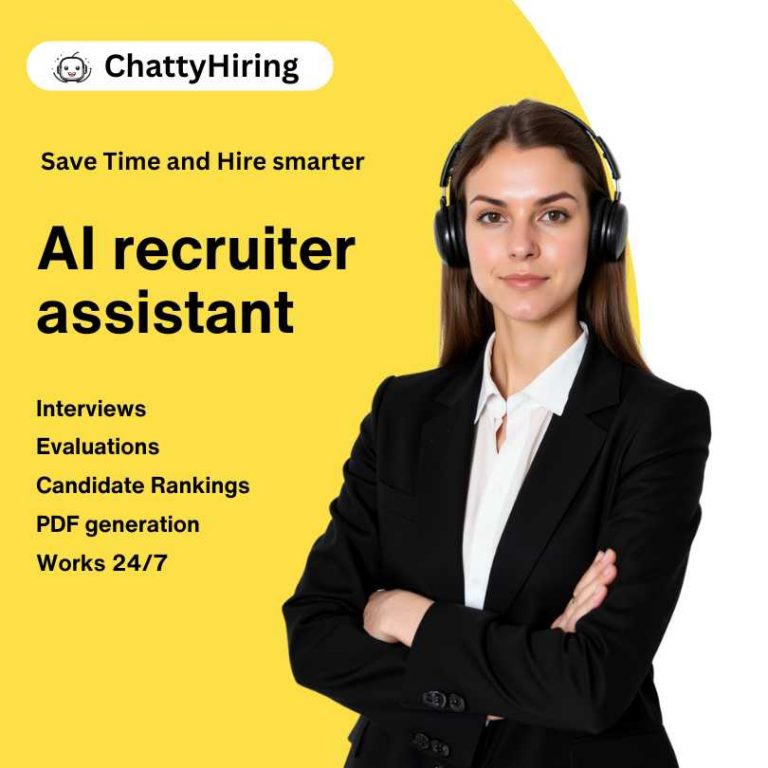To effectively recruit the right talent, it is essential to have a comprehensive understanding of your company’s needs. This begins with a thorough analysis of the organization’s goals, culture, and the specific skills required for each position. Engaging with department heads and team leaders can provide valuable insights into the competencies that are necessary for success in various roles.
For instance, if a company is aiming to expand its digital marketing efforts, it may require candidates with expertise in SEO, content creation, and social media management. By aligning recruitment strategies with the overarching business objectives, organizations can ensure that they attract candidates who not only possess the requisite skills but also fit well within the company culture. Moreover, understanding your company’s needs extends beyond immediate hiring requirements.
It involves anticipating future workforce demands based on projected growth, technological advancements, and industry trends. For example, a tech company may need to consider the implications of emerging technologies such as artificial intelligence or machine learning on its workforce. By forecasting these needs, organizations can proactively develop talent pipelines and create job roles that align with future objectives.
This strategic foresight not only enhances recruitment efforts but also positions the company as a forward-thinking employer that values long-term growth and adaptability.
Key Takeaways
- Understanding your company’s needs is crucial for effective recruitment
- Identifying target candidates with the right skills and cultural fit is essential
- Creating compelling job descriptions can attract top talent to your organization
- Utilizing multiple channels for recruitment increases the reach and diversity of candidates
- Implementing a structured interview process ensures fair and thorough candidate evaluation
- Offering competitive compensation and benefits is key to attracting and retaining top talent
- Providing professional development opportunities can help in employee retention and growth
- Evaluating and adjusting the recruitment strategy is important for continuous improvement
Identifying Target Candidates
Once a clear understanding of the company’s needs has been established, the next step is to identify target candidates who possess the desired qualifications and attributes. This process begins with defining the ideal candidate profile, which includes not only technical skills but also soft skills such as communication, teamwork, and problem-solving abilities. For example, in a customer service role, a candidate’s ability to empathize with clients and resolve conflicts effectively may be just as important as their technical knowledge of the product or service being offered.
In addition to defining the ideal candidate profile, organizations should leverage data analytics to identify potential candidates. Utilizing tools such as applicant tracking systems (ATS) can help streamline this process by filtering resumes based on specific keywords and qualifications. Furthermore, social media platforms like LinkedIn can be invaluable for sourcing candidates who may not be actively seeking new opportunities but possess the skills and experience that align with the company’s needs.
By employing a data-driven approach to candidate identification, organizations can enhance their chances of finding individuals who are not only qualified but also genuinely interested in contributing to the company’s success.
Creating Compelling Job Descriptions

A well-crafted job description serves as a critical tool in attracting the right candidates. It should clearly outline the responsibilities of the role, the qualifications required, and the unique aspects of the company culture that make it an attractive place to work. Instead of using generic language, organizations should strive to create engaging descriptions that reflect their brand voice and values.
For instance, rather than simply stating that a candidate must have “excellent communication skills,” a more compelling approach might involve describing how effective communication is integral to collaboration within teams and enhancing customer relationships. Additionally, incorporating elements that highlight the company’s mission and vision can resonate with potential candidates who share similar values. For example, if a company is committed to sustainability, mentioning initiatives related to environmental responsibility can attract candidates who are passionate about making a positive impact.
Furthermore, including information about career advancement opportunities and employee benefits can enhance the appeal of the position. By presenting a holistic view of what it means to work for the organization, companies can attract candidates who are not only qualified but also genuinely excited about contributing to its mission.
Utilizing Multiple Channels for Recruitment
In today’s competitive job market, relying on a single recruitment channel is often insufficient to attract top talent. Organizations should adopt a multi-channel approach that encompasses various platforms and methods for reaching potential candidates. Traditional job boards remain valuable; however, supplementing these with social media recruitment, employee referrals, and industry-specific forums can significantly broaden the talent pool.
| Recruitment Channel | Effectiveness | Cost |
|---|---|---|
| Job Boards | High | Medium |
| Social Media | Medium | Low |
| Employee Referrals | High | Low |
| Recruitment Agencies | High | High |
For instance, utilizing platforms like Glassdoor or Indeed can help reach active job seekers while leveraging LinkedIn can connect with passive candidates who may be open to new opportunities. Moreover, attending industry conferences and networking events can provide direct access to potential candidates while also enhancing the company’s visibility within its sector. Engaging in community outreach initiatives or partnering with local universities can further expand recruitment efforts by tapping into emerging talent pools.
By diversifying recruitment channels, organizations can increase their chances of finding candidates who not only meet technical requirements but also align with the company’s culture and values.
Implementing a Structured Interview Process
A structured interview process is essential for ensuring consistency and fairness in candidate evaluation. This approach involves developing a standardized set of questions that are aligned with the competencies required for the role. By asking all candidates the same questions, interviewers can more easily compare responses and assess how well each candidate meets the established criteria.
For example, if teamwork is a critical component of a position, interviewers might ask candidates to describe a time when they collaborated on a project and how they handled any challenges that arose. In addition to standardizing questions, incorporating behavioral interview techniques can provide deeper insights into a candidate’s past performance and potential future behavior. This method focuses on understanding how candidates have handled specific situations in their previous roles, which can be indicative of their problem-solving abilities and interpersonal skills.
Furthermore, involving multiple interviewers in the process can help mitigate biases and provide a more comprehensive evaluation of each candidate’s fit for the organization.
Using conductive interivews with STAR methodology

The STAR method is a structured approach used in interviews to assess a candidate’s past behavior as an indicator of future performance. The acronym stands for Situation, Task, Action, and Result. Candidates are prompted to describe a specific situation they faced, the task they needed to accomplish, the actions they took, and the results of those actions. This technique allows interviewers to gain a clear and concise understanding of how candidates have handled real-life scenarios relevant to the job.
By employing the STAR methodology, interviewers can elicit detailed responses that reveal a candidate’s problem-solving abilities, decision-making process, and interpersonal skills. For instance, when asked about a time they resolved a conflict at work, a candidate might outline the context of the disagreement (Situation), explain their role and responsibilities (Task), describe the steps they took to address the issue (Action), and share the positive outcome that resulted from their intervention (Result). This structured narrative provides insight into the candidate’s competencies and suitability for the role.
Implementing the STAR method in interviews not only aids in gathering consistent and relevant information but also helps in minimizing biases. It ensures that all candidates are evaluated based on specific examples of past behavior, making the selection process more objective. Moreover, it encourages candidates to provide concrete evidence of their skills and achievements, moving beyond generic statements to demonstrable experiences. This approach enhances the interview’s effectiveness in identifying the best fit for the position
Get a shortlist of top candidates within 8-10 days using AI
swiftly identifying top talent is crucial for organizations aiming to maintain a competitive edge. Artificial Intelligence (AI) has revolutionized the recruitment landscape, enabling companies to shortlist top candidates within a remarkably short timeframe. By leveraging AI-driven tools, recruiters can efficiently analyze vast pools of applicants, ensuring that the most qualified individuals are identified promptly.
AI recruiting platforms utilize advanced algorithms to assess resumes, match candidate qualifications with job requirements, and predict potential success within specific roles. For instance, tools like HireAI can generate a candidate shortlist in seconds by analyzing job descriptions and identifying suitable candidates from a global talent pool.
Similarly, platforms such as Ideal automate the screening process by evaluating resumes and providing recruiters with a curated list of qualified candidates, thereby expediting the initial stages of hiring.
The integration of AI in recruitment not only accelerates the hiring process but also enhances the quality of candidate selection. By automating routine tasks like resume screening and initial assessments, recruiters can focus their efforts on engaging with top-tier candidates and making informed decisions. This approach leads to more efficient hiring cycles, allowing organizations to secure top talent within as little as five days, ultimately contributing to sustained business success.
This can be a very generic timilne of the hiring objectives
| Recruitment Channel | Time | Key element |
|---|---|---|
| Obtain candidates | 3-5 days | Multiposting |
| Screen & Qualify | 2-3 days | Conductive interviews |
| Shortlist candidates | 10 days | Automated ranking & AI support |
| Final interviews | 3 days | In-depth interiviews 1 on 1 calls |
Evaluating and Adjusting the Strategy
Recruitment is not a one-time effort; it requires ongoing evaluation and adjustment to remain effective in an ever-changing job market.
Organizations should regularly assess their recruitment strategies by analyzing key performance indicators such as time-to-fill positions, candidate quality, and employee retention rates.
Gathering feedback from both hiring managers and candidates can provide valuable insights into areas for improvement within the recruitment process.
Additionally, staying informed about industry trends and shifts in candidate expectations is crucial for adapting recruitment strategies accordingly.
For example, if remote work becomes increasingly popular among job seekers in a particular sector, organizations may need to adjust their policies to remain competitive.
By fostering a culture of agility and responsiveness in recruitment efforts, companies can ensure they continue to attract top talent while meeting their evolving business needs.
If you are interested in learning more about how AI technology is revolutionizing the recruitment process, check out the article Unlocking Efficient Recruitment Solutions with AI Technology. This article delves into how AI can streamline the hiring process and improve efficiency in talent acquisition. By incorporating AI into your talent acquisition strategy template, you can stay ahead of the curve and attract top talent in a competitive market.
FAQs
What is a talent acquisition strategy template?
A talent acquisition strategy template is a document that outlines the approach and methods a company will use to attract, recruit, and retain top talent. It typically includes an analysis of the company’s current workforce, identification of future talent needs, and a plan for sourcing and hiring the right candidates.
What are the key components of a talent acquisition strategy template?
Key components of a talent acquisition strategy template may include an assessment of current and future talent needs, a sourcing plan for attracting candidates, a recruitment plan outlining the hiring process, and a retention plan for keeping top talent engaged and motivated.
Why is a talent acquisition strategy template important?
A talent acquisition strategy template is important because it helps organizations align their hiring efforts with their overall business goals. It provides a structured approach to attracting and retaining top talent, which is crucial for the success and growth of any organization.
How can a company use a talent acquisition strategy template?
A company can use a talent acquisition strategy template by customizing it to fit their specific needs and goals. This may involve conducting a thorough analysis of their current workforce, identifying future talent needs, and developing a plan for sourcing, recruiting, and retaining the right candidates.
-

A passionate advocate for the future of HR innovation. With expertise in leveraging AI to revolutionize recruitment processes, Carlos has a clear vision: empower HR teams while creating meaningful candidate experiences.
View all posts





